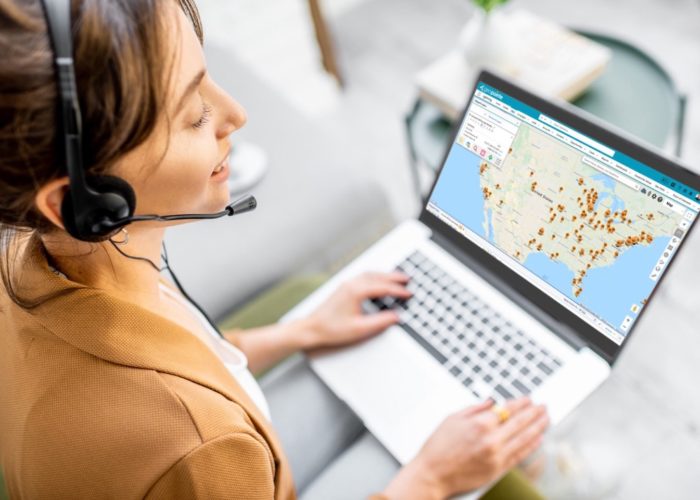We are pleased to announce a new version of Geopointe is now available on the AppExchange.
We will push this update to all customers automatically over the Thanksgiving Holiday weekend here in the US, We already pushed the update to all Sandbox systems with Geopointe installed. If you want the release now, go get it on AppExchange.
Some of the highlights in this new release are..
Check-In Updates
Geopointe Mobile has allowed for Check-Ins for over a year and we have improved this process.
Activity Creation
Administrators can now set the system to automatically log an Activity for the Check-In. The Organization Settings section of the Geopointe Setup tab contains a new preference to turn on Activity creation. By default, the Subject of the Activities will be prefixed with “Check-In:”, but the Administrator has the ability to modify that. Modifying the Subject Prefix is a good way to allow for consistent reporting on the Activity History.

After the activity is created, the ID of that Activity record is documented on the Check-In record so you can maintain the relationship between the two.
Link Check-Ins to Related Records
Lookup fields were added to the Check-In object that point to Lead, Account, Contact, Opportunity and Cases. If you have Geopointe setup to map Custom Objects, you can add a Lookup field on the Check-In object to that Custom Object.
When a Check-In occurs from the Mobile device, the record will be automatically linked to the corresponding record. This feature allows you to add a Check-Ins related list to your page layouts to see Check-In history for a record.

NOTE: We did not update your Check-In history to populate the lookup fields on existing records. If you want your history updated, simply use Data Loader (or similar) to update the Check-In records to trigger the logic to execute.
Distance Measurement
It is important to know the distance a user was from the actual location of the places they are checking into. Historically, Geopointe would only log the user’s actual location, but many customers wanted to know how close that person was to the actual location of the Account.
All Check-Ins now perform a calculation that document the distance of the actual check in from the geocode of the record being checked into.

NOTE: We did not update your Check-In history to populate the measurement fields on existing records. If you want your history updated, simply use Data Loader (or similar) to update the Check-In records to trigger the logic to execute.
geopointe.API.checkIn()
For developers, we added a new Apex method allowing you to perform a Check-In in your own Apex logic. View our Apex API documentation for details.
Map Objects
Referenced Map Objects
We are very pleased to announce support for more advanced Map Object configuration, allowing you to setup a Map Object to refer to another’s configuration. For example, suppose you have Accounts setup already and now want to map your Opportunities and Assets. Both Opportunities and Assets are related to Accounts and you want those objects to inherit the configuration from Accounts. Now you can.

Map Objects now have two Setup Types: Defining the Map Object (the original way) and now Using Another Map Object (the new way). Referring to another Map Object has the following advantages:
- Records in the object are immediately available for mapping. No more waiting for the record to be geocoded. As long as its “parent” record has been geocoded, the child record is immediately available for mapping.
- No storage space required. You do not need to hold onto Geocode records for objects configured this way.
NOTE: The upgrade process will automatically reconfigure several standard objects (Opportunities, Opportunity Line Items, Cases, Quotes, Assets and Contracts) if they are already referencing their parent’s info using the old method.
Geocode Batch Size
You can now set the Geocode batch size for a Map Object. The default size is 50 and that is what is recommended unless you have reason to change it. The primary reason for changing it is if you have trigger logic in Salesforce that cannot handle a batch of 50 records running through it due to Salesforce governor limits. The new preference on the Map Object lets you set it to a lower value so or geocoder doesn’t conflict with your own custom triggers.
Usability
Click-To-Call Support (CTI)
If you are using a CTI integration that utilizes the Salesforce CTI Toolkit, any phone numbers presented in the Geopointe results list now support click-to-call.

Translated Picklist Values
If you are using Salesforce’s translation workbench, data returned in your queries will now pickup on those translations. This data will flow to both the main app in Salesforce as well as Geopointe Mobile.
Permission Set
A new Permission Set called “Geopointe Base Permissions” is now included in the Geopointe install. This Permission Set has all the settings required to assign a user the proper object, field, page and class access they need. We made it easy to assign this Permission Set to your users. Simply click the Set User Permissions button on the Geopointe Setup page.
Utilizing Permission Sets greatly simplifies the need to configure the user’s profile in great detail. It also eliminates the need for our Group and Professional Edition customers to include the Geocode field onto their Page Layouts.

geopointe.API
We added new methods to the geopointe.API apex class for geocoding a single record, checking into a record and various distance measurement calculations. View our Apex API documentation for details.
Mobile
We are working very hard to support Geopointe Mobile on Group and Professional Editions. This release contains the completed logic as it pertains to the AppExchange install. We are now working on the mobile apps themselves. Our goal is to support Group and Professional Editions on mobile by the end of the year.
New Support Site
We moved all of our support documentation to our new support site at https://support.geopointe.com.



